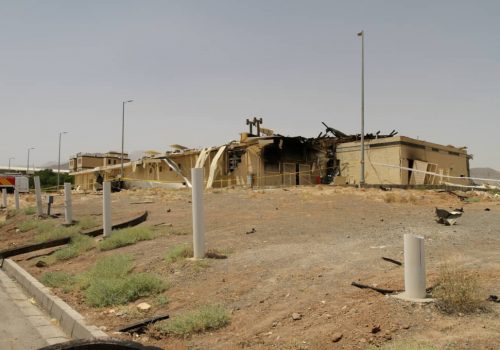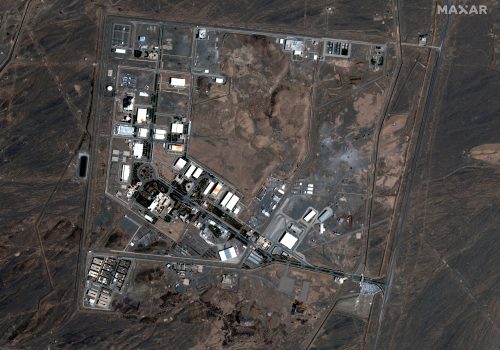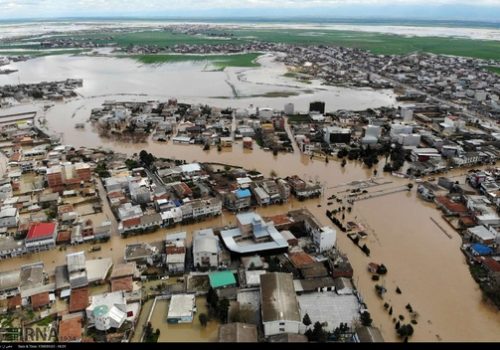The forest fires in Iran that won’t stop burning
Iran has been ravaged by hundreds of brush and wildfires spreading across thousands of acres since May 22. The phenomenon is not entirely new but, the number of fires have increased by 2.5 percent compared to last year at this time. The fires have raised questions and concerns as to whether they were caused by accident or arson.
The Arasbaran forest in northwestern Iran was the latest to catch fire in early July. The Kurdistan, Kermanshah, and Bushehr provinces have also been dealing with forest fires in the past few months, while fires in the Khuzestan, Lorestan, and Ilam provinces in June not only destroyed forests, but acres of vegetation, pastureland, and grassland. The fires in the Ludab region of Kohgiluyeh and Boyer-Ahmad province devastated pastureland and also burned down many trees. On June 26, 3,217 square yards of the protected forests of Fasa in Fars province burned.
According to Deputy Agriculture Minister and head of the Forest Organization Masoud Mansour, 90 percent of the fires were caused unintentionally by human error. The fires in Estahban in Fars province started because of the carelessness of visitors.
Iranians have told me that another reason for the fires is the lack of precautionary measures taken by smokers who don’t dispose of their cigarettes properly.
The remaining 10 percent or “intentional” fires were often motivated by personal interest. Some farmers burn parts of the forest adjacent to their land to expand crop planting or because of their rivalry with other landowners. Some seek to use the land for other purposes.
An individual reportedly involved in the Rezvanshahr forest fire in Gilan province was arrested and confessed to committing arson. He is apparently a resident of that northern region. The alleged arsonist said he acted out of revenge because he had been prosecuted for chopping down trees and illegally selling the wood earlier this year.
Climate change also plays a role. Recently, in Gilan province, strong warm winds caused fires to spread over about 104 acres of forest. During the summer, when high winds are prevalent, fires spread swiftly. Talesh, Rudbar, Rasht, Siahkal, Rezvanshahr, Astaneh, and Ashrafieh are among the northern cities affected by high winds that can spread wildfires. Even more importantly, drought has played a big role in contributing to the fires in the south and central parts of the country. Dried-out vegetation provides more fuel for the fires, igniting easily and spreading flames quickly.
Iranians have taken to social media to post their concerns about the environmental impact of the fires. There are worries about the wild life in Khenj in Fars province, where unique types of animals and birds exist. Wildfires have also threatened the Khaeez Protected Area, which was registered as a sanctuary in 1998 due to its 82 acres of forest inhabited by unique life forms. Khaeez forest is home to more than 1,500 wild goats and other rare wildlife, such as leopards and caracals—also known as the Persian lynx. These animals are now endangered due to the forest fires.
Though the Iranian government has managed to contain the wildfires quickly in most cases, there have been instances where they have fallen short. Deputy Agriculture Minister Mansour noted that there have been six cases in which putting out forest fires took longer than expected. This is because they did not have the required resources—namely firefighter helicopters, which spray and drop buckets of water. While the helicopters are not that expensive, there is a deficiency of this specific type of helicopter, according to Mohammad Darvish, an environmental activist. Mansour explained, “While we have had about eight hundred conflagrations since March 21, if it weren’t for financial provisions, the harm of such cases would be even more.”
According to many analysts, including an anonymous former official that has worked in the Science and Higher Educational Ministry, the Iranian government’s failure to procure sufficient helicopters is partly due to US-imposed sanctions and the economic harms caused to the Iranian economy. Mansour blamed the lack of resources on a debt the Forest Organization owed the Defense Ministry—another consequence of sanctions, which has increased budget deficits. It is also possible that officials at the Forest Organization did not foresee the need for this equipment.
Now that these fires are becoming more common, the government has announced that it will provide the necessary equipment.
It’s worth noting that many Iranian volunteers on the local level have played a major role in putting out forest fires. Some have also lost their lives. Alborz Zarei, a volunteer, died while extinguishing the fire in Zagros Mountains in the southwestern part of the country. Zarei was an environmental activist and enjoyed hiking in the mountains.
The cascade of forest fires has increased frustration and skepticism among many Iranians. Shima, a lawyer in Tehran, who asked that her last name not be mentioned, told me that it is hard for her to accept that the forest fires are happening so frequently. She is among the Iranians that are concerned that the issue of the environment has been used for political purposes by individuals and groups. As the debate continues, fires continue to burn.
Tahereh Hadian-Jazy is a freelance writer in Iran. She holds a masters degree in modern Middle Eastern studies from Oxford University and has been accepted for a PhD at the University of St. Andrews.
Image: A 15-acre fire in Ardabil, Iran (IRNA)


